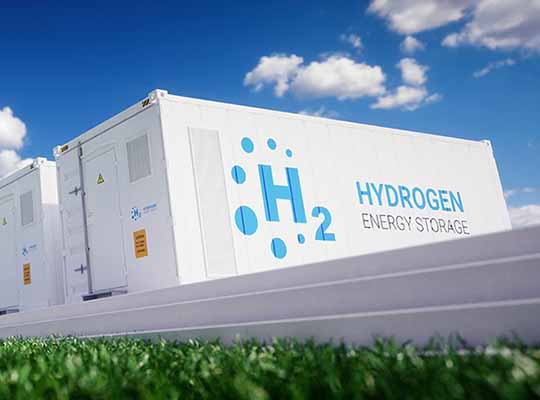The worldwide hydrogen energy storage market has garnered USD 14,100 million revenue, which will grow to USD 304,108 million at a 46.80% CAGR from 2022 to 2030, as per the latest P&S Intelligence forecast.
This will be due to the strengthening emphasis on non-fossil energy sources, increasing government support, rising demand for electricity, and surging expenditure on the hydrogen fuel cell technologies.
H2 is suitable for numerous applications, including fuel cell vehicles, hydrogen production sites, and stationary power plants.
Government Sustainability Initiatives Fuel Demand for Hydrogen Energy Storage
- Over the years, the U.S., the U.K., India, and many other nations have upped their focus on research & development in the hydrogen fuel cell technology.
- The R&D is primarily aimed at allowing for enough hydrogen storage capacity for material-handling equipment, light-duty vehicles, and portable power production.
- For instance, the NREL has collaborated with the U.S. DoE to develop inexpensive, high-performing hydrogen and fuel cell technologies for portable and stationary power and transportation.
- Furthermore, the MNRE offers support to R&D projects and those that demonstrate methods to harness hydrogen energy.
Increasing Adoption of Physical Hydrogen Storage Solutions
The highest CAGR, of over 50%, will be seen in in the physical category.
- It is attributed to the rising requirement for solutions to store the gas in its physical form in refineries because of the poor-quality crude oil, as well as the stringent government regulations to control emissions in emerging economies.
Rising Application of Material-Based Technologies due to Low Cost
- The material-based category will also have a considerable share in the storage form segment in the near future. It involves the storage of hydrogen in carbon compounds. These storage technologies entail a lower storage cost and pressure and are used to boost the volumetric and gravimetric capacity.
- In addition, the technology offers a higher storage capacity and efficiency, ascribed to the strong hydrogen binding and storage densities.
Need to Store Hydrogen in APAC Driven by Rising Derivative Demand
APAC contributes the second-highest revenue to the industry on account of the rising production of ammonia and methanol from this gas in China and India. Moreover, the need for cleaner fuels and lower GHG emissions is impelling regional countries to focus on storing hydrogen for energy production and transportation.
North America is also a significant market for hydrogen storage technologies due to the government push for FCEVs and establishment of hydrogen filling stations.
On similar lines, the demand for these solutions in Europe is driven by the strong emphasis on generating electricity from low- and zero-emission resources. Another major driver for the regional market is the growing adoption of hydrogen-powered vehicles, especially in Western European countries, such as the U.K. Germany, and France.
Hydrogen Energy Storage Market Report Coverage
Based on Form of Storage
- Physical
- Material-Based
Based on Type of Storage
- Cylinder
- Merchant/Bulk
- On-Board
- On-Site (SME)
Based on State
- Solid
- Liquid
- Gas
Based on Technologies
- Compression
- Liquification
- Material based
Based on Application
- Stationary power
- Transportation
Based on End Use
- Industrial
- Commercial
- Electric utilities
Regional Analysis
- North America
- U.S.
- Canada
- Europe
- Germany
- U.K.
- France
- Italy
- Spain
- Asia-Pacific
- Japan
- China
- India
- South Korea
- Australia
- Latin America
- Brazil
- Mexico
- Middle East and Africa
- Saudi Arabia
- South Africa
- U.A.E.













